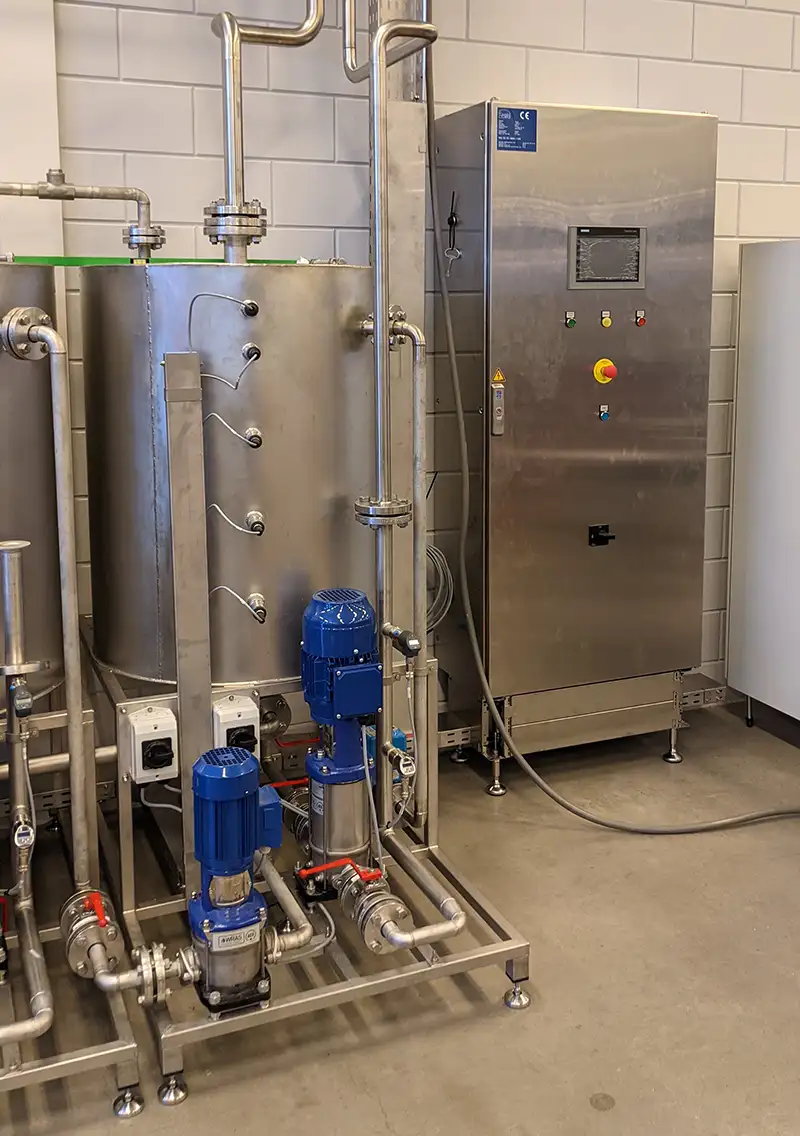Emission control with analysers
Indirect emission control based on washing liquid monitoring
 The quality of the emitted gas can be conducted in diverse ways. The most common principle is based on monitoring the quality of the washing liquid. This is a good method as the quality of the washing liquid is directly proportional to the quality of the emitted gas. Before the correlation between the limit value of the gas in relation to the washing liquid is determined, it is often necessary to experiment with the settings of the washing liquid during the adjustment period. Once the limit values have been established with the emission measurements or sampling of the gas, the scrubber can be put into operation permanently. The contaminants in the waste gas and the chemicals used to enable the scrubber to function correctly, determine the choice of instruments (sensors for the washing liquid) that should be used. The acidity of the washing liquid is determined using a pH measurement, in addition, a conductivity measurement is often used for quality which determines the drain. In addition, a free chlorine measurement is often used to determine the reaction of the washing liquid in the buffer, whether in combination with an ORP measurement for the reaction velocity.
The quality of the emitted gas can be conducted in diverse ways. The most common principle is based on monitoring the quality of the washing liquid. This is a good method as the quality of the washing liquid is directly proportional to the quality of the emitted gas. Before the correlation between the limit value of the gas in relation to the washing liquid is determined, it is often necessary to experiment with the settings of the washing liquid during the adjustment period. Once the limit values have been established with the emission measurements or sampling of the gas, the scrubber can be put into operation permanently. The contaminants in the waste gas and the chemicals used to enable the scrubber to function correctly, determine the choice of instruments (sensors for the washing liquid) that should be used. The acidity of the washing liquid is determined using a pH measurement, in addition, a conductivity measurement is often used for quality which determines the drain. In addition, a free chlorine measurement is often used to determine the reaction of the washing liquid in the buffer, whether in combination with an ORP measurement for the reaction velocity.
Emission control with an analyser
A direct, exceptionally reliable control of the emission can be conducted using a specific analyzer. The analyser is mounted in the discharge behind the scrubber and immediately measures the presence of the remaining contaminants in the gas. The nature of the impurities determines the choice of the analyzer; here a distinction is made between dust analyzers and specific gas analyzers. In the case of online dust analysis, a probe is used, if possible, that provides a direct readout for the total dust concentration.
The gas analyzers measure online with a reading in ppm. With an extractive measurement, a form of sampling conditioning is always required because of, for example, the high gas temperature or a high-water concentration. The preference of using an analyzer to check the emissions of a scrubber installation is the fact that the emission value is directly readable. Based on the measured value, the drain of the scrubber can be activated so that the quality of the washing liquid is directly controlled. At the same time, the user of the installation, the permit provider and the environmental service know the emission values under all circumstances and no emission exceedance will take place because of the direct measurement method.
